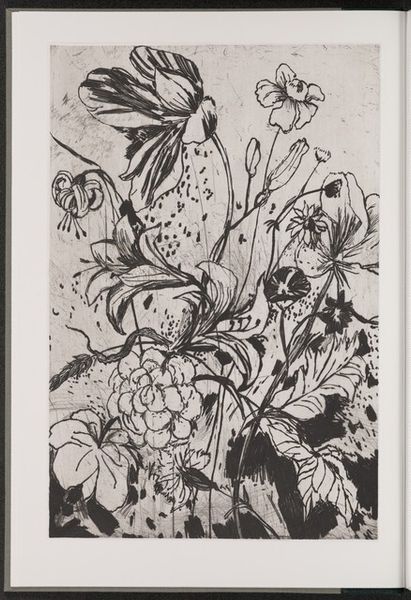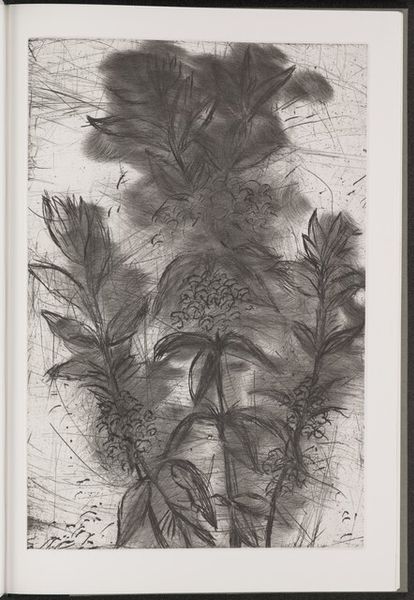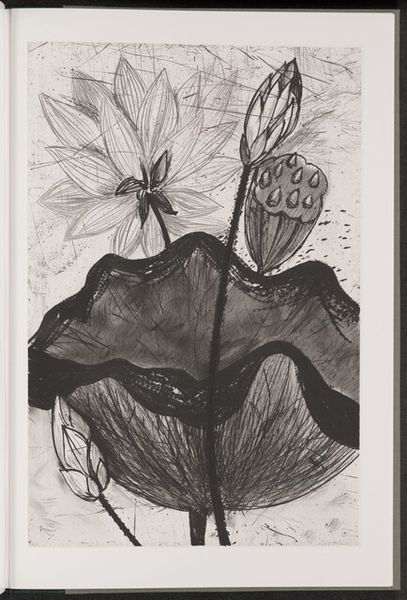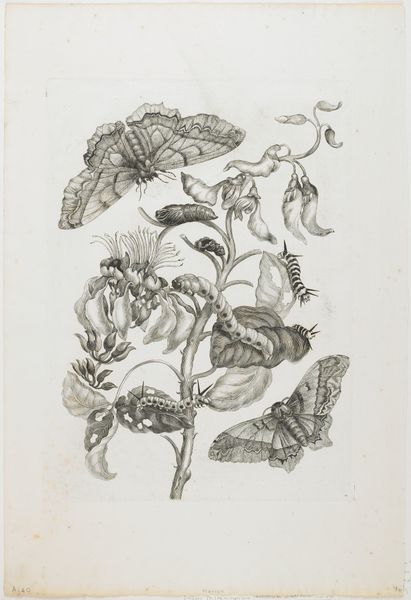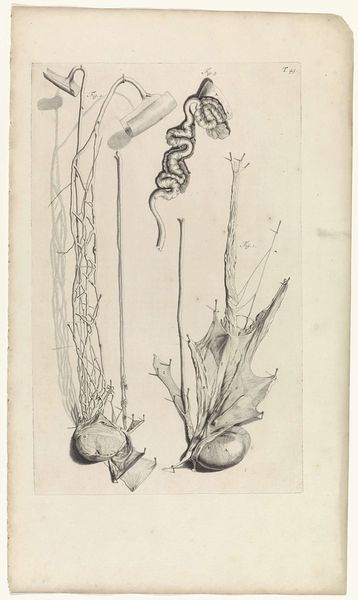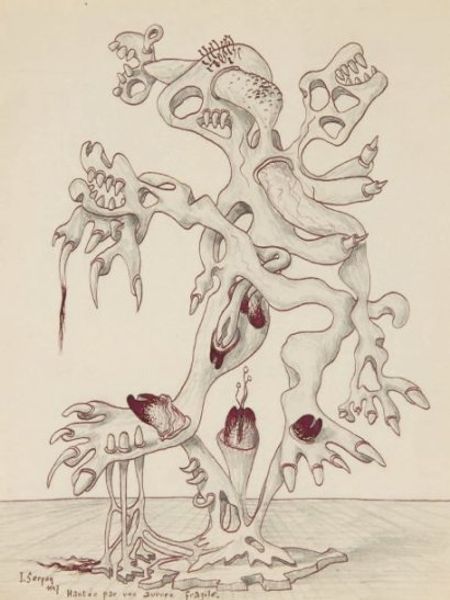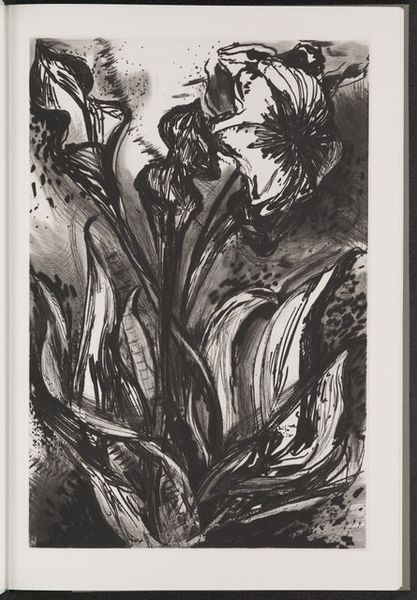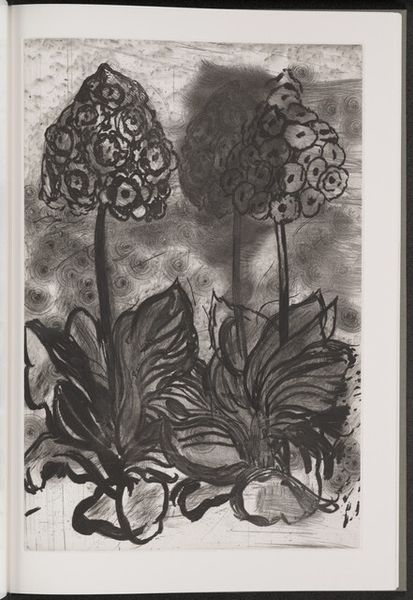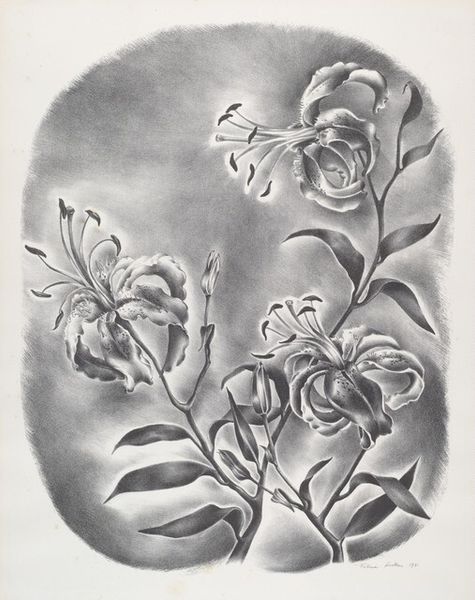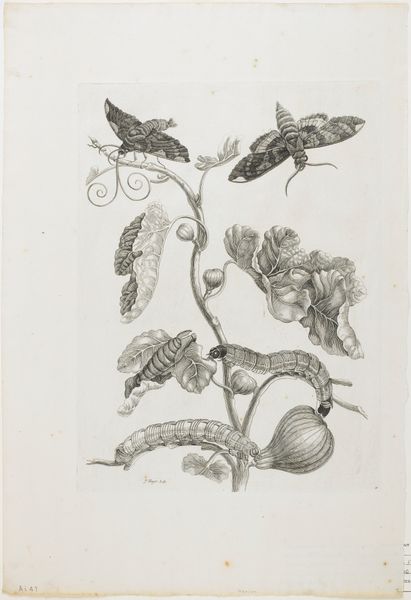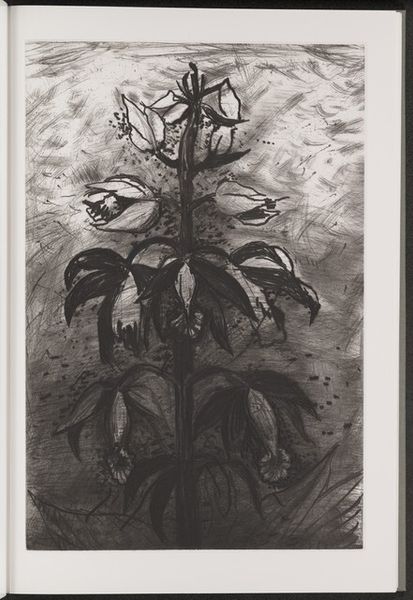
drawing, print, graphite
#
drawing
#
organic
# print
#
line
#
graphite
Dimensions: plate: 45.4 x 30.5 cm (17 7/8 x 12 in.) page size: 52 x 35.5 cm (20 1/2 x 14 in.)
Copyright: National Gallery of Art: CC0 1.0
Curator: Jim Dine's "Winged Passionflower," created in 1984, employs graphite in a print medium to capture the essence of organic life through a stark black and white lens. Editor: The stark contrast immediately strikes me; it feels both delicate and raw. The spiraling tendrils create a wonderful sense of movement against the static backdrop. Curator: Dine's fascination with commonplace objects is well-known. Passionflowers, while exotic in some contexts, often appear in domestic settings, aligning with his exploration of personal iconography and the intersection of public and private spaces. Editor: There's a beautiful tension between the realism of the leaves and the more abstract rendition of the flower itself. The linework varies; some lines are bold and definitive, while others fade, giving the impression of light playing across the surfaces. This variance gives it vitality. Curator: Exactly! This kind of approach reflects Dine's rejection of pure abstraction and his commitment to representation within the evolving art market trends that alternately valued the avant-garde and figuration during that period. His print works gained traction partly because they made art more accessible. Editor: Accessibility is crucial, yes, but aesthetically speaking, the overlapping layers create depth where there really shouldn't be any. Note how the linear textures add visual weight that almost counteracts the floral lightness we typically associate with this theme. Curator: I find myself contemplating how Dine's commercial background might inform these particular stylistic choices. The strategic deployment of recognizable and familiar images allowed him to connect to a broader viewership while solidifying his standing within gallery settings. Editor: I agree, though the image’s success truly lies in the composition. It’s meticulously arranged, each line and form contributing to a cohesive and emotionally resonant whole. The drawing encapsulates life, tension, and beauty, all at once. Curator: It offers an excellent example of the negotiation between the avant-garde aesthetic of printmaking as an established medium in the art world, along with traditional, representational modes. Editor: A thought-provoking display of the interplay of medium and composition. Curator: I agree. A worthwhile piece that really makes you consider the value of accessible artistry.
Comments
No comments
Be the first to comment and join the conversation on the ultimate creative platform.
